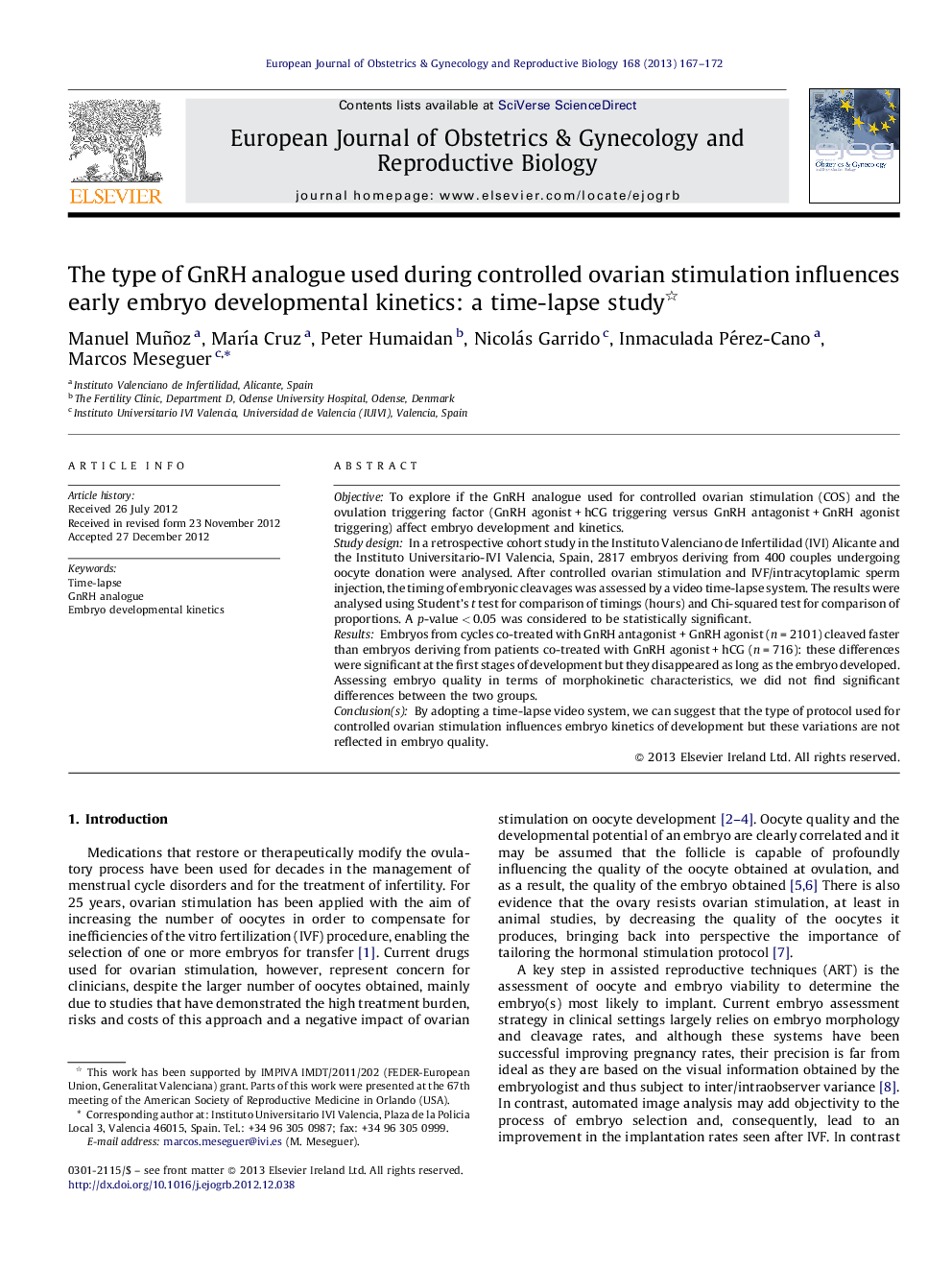| Article ID | Journal | Published Year | Pages | File Type |
|---|---|---|---|---|
| 3920110 | European Journal of Obstetrics & Gynecology and Reproductive Biology | 2013 | 6 Pages |
ObjectiveTo explore if the GnRH analogue used for controlled ovarian stimulation (COS) and the ovulation triggering factor (GnRH agonist + hCG triggering versus GnRH antagonist + GnRH agonist triggering) affect embryo development and kinetics.Study designIn a retrospective cohort study in the Instituto Valenciano de Infertilidad (IVI) Alicante and the Instituto Universitario-IVI Valencia, Spain, 2817 embryos deriving from 400 couples undergoing oocyte donation were analysed. After controlled ovarian stimulation and IVF/intracytoplamic sperm injection, the timing of embryonic cleavages was assessed by a video time-lapse system. The results were analysed using Student's t test for comparison of timings (hours) and Chi-squared test for comparison of proportions. A p-value < 0.05 was considered to be statistically significant.ResultsEmbryos from cycles co-treated with GnRH antagonist + GnRH agonist (n = 2101) cleaved faster than embryos deriving from patients co-treated with GnRH agonist + hCG (n = 716): these differences were significant at the first stages of development but they disappeared as long as the embryo developed. Assessing embryo quality in terms of morphokinetic characteristics, we did not find significant differences between the two groups.Conclusion(s)By adopting a time-lapse video system, we can suggest that the type of protocol used for controlled ovarian stimulation influences embryo kinetics of development but these variations are not reflected in embryo quality.
